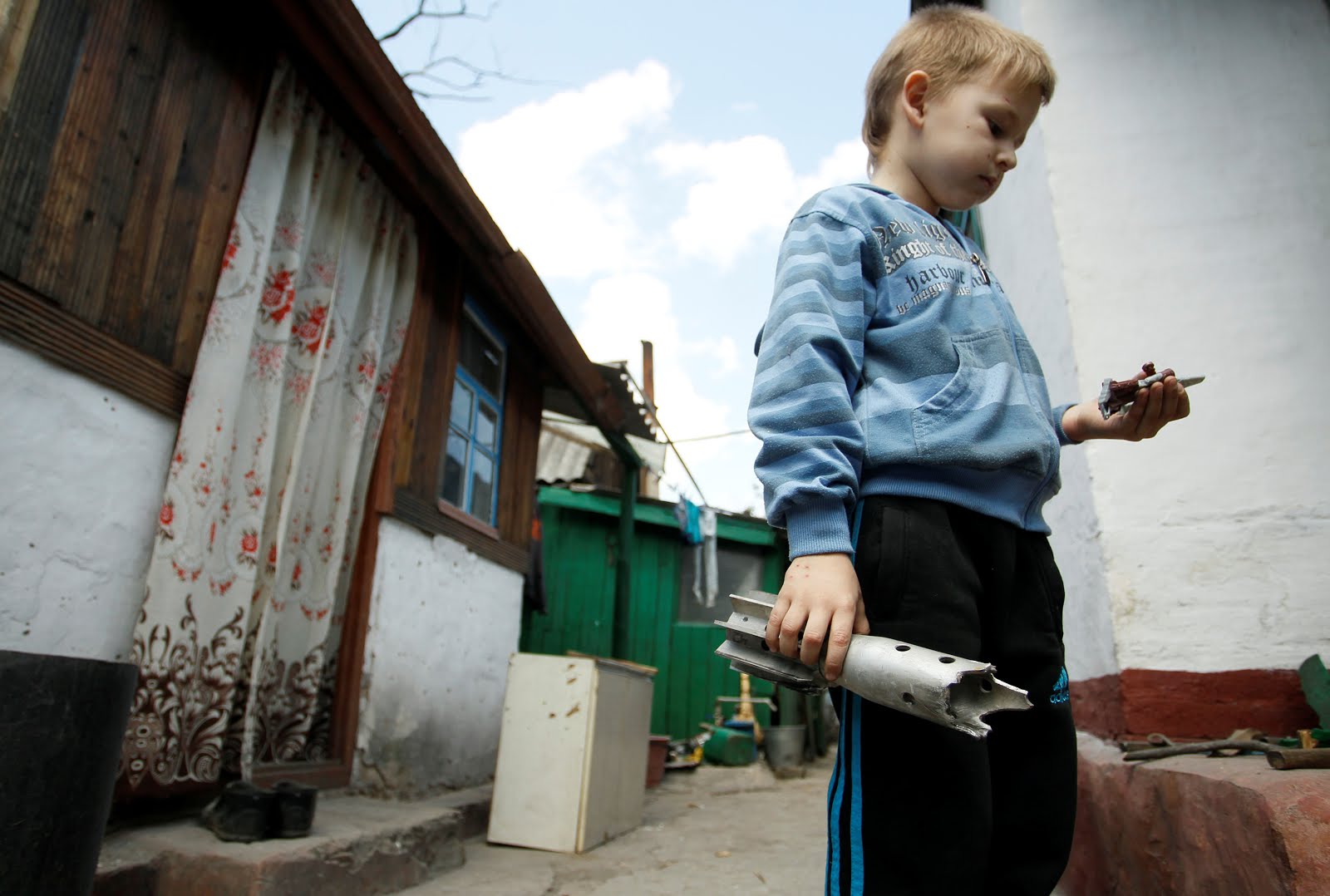School children are targets in the war in Eastern Ukraine
Sebastian
Meyer, PBS NewsHour, Feb 27, 2018
In
Eastern Ukraine, children still go to school and play, but the intrusion of
violence into their everyday lives has made them the vulnerable victims of a
war that's about to enter its fourth year.
 Special correspondent Sebastian
Meyer went on assignment for UNICEF for a look at the lives of children living
on the front lines of the conflict.
Special correspondent Sebastian
Meyer went on assignment for UNICEF for a look at the lives of children living
on the front lines of the conflict.
Judy Woodruff:The war between Ukraine and Russian-backed separatists is entering its fifth year. Since it began, more than 3,000 civilians have been killed, and 1.7 million have been displaced.To see how the conflict affects children living along the front line, special correspondent and videographer Sebastian Meyer went on assignment for UNICEF, the U.N. agency for children, to Eastern Ukraine, and brought the NewsHour this story.
Sebastian
Meyer:
Every
morning sisters, Diana and Dasha get ready for school. Their day begins like so
many other children, braiding hair, getting dressed, and walking to the school
bus.
But
that’s where the similarities end. Diana and Dasha live near the front lines on
the outskirts of Donetsk in Eastern Ukraine. Their school has been hit so many
times with shrapnel that now all the classroom windows are piled high with
sandbags. I counted at least 14 holes in the windows.
Dasha,
the older sister, remembers the school being hit while in chemistry class.
Sebastian Meyer:Dasha Semeniuk (through interpreter): We ran out just in time, because, as soon as we ran out, a piece of shrapnel hit our window. Of course it was scary. I didn’t go to school after that for two days. I was scared that something like that would happen again. But then I started going again.
Now a
Ukrainian soldier is stationed at the school.
This
conflict began after the Ukrainian president, Viktor Yanukovych, fled to Russia
in 2014 after violent protests in the capital, Kiev. Within months, Moscow had
invaded and annexed Crimea, and thrown its support behind pro-Russia
separatists here in the Donbass region of Eastern Ukraine.
Russia
backed the separatist movement. It quickly turned violent and descended into
all-out conflict with the Ukrainian military. The two sides have been locked in
combat ever since.
Today, an
ad hoc border now runs hundreds of miles through Eastern Ukraine. To cross back
and forth, civilians have to pass through military checkpoints. Their bags are
checked and passports inspected.
I was
allowed to cross over into the non-government-controlled area, but wasn’t
allowed to film. Despite attempted cease-fires, this conflict is about to enter
its fourth year. According to the U.N., over 10,000 people have been killed,
including 138 children.
These
children of School Number Two in Krasnohorivka are targets. Last year, their
school was hit in a direct strike on May 29.
Sebastian Meyer:Iryna Morhun (through interpreter): The shelling doesn’t leave a child’s psyche unscathed. Children are traumatized. They are terrified. There are children who become very emotional. They pour their feelings out.On the other side, there are children who keep this pain inside. It is very sad to see children, who should be having a happy childhood, suffer because of this war.
Last
year, 42 children were wounded and six were killed because of this conflict.
Sasha was
waiting outside a friend’s house when he was shot by a stray bullet.
Sasha (through interpreter): The bullet hit my leg. I ran a little. Then my friend came out. I called to him. He put me on my bike and brought me home.
Sebastian
Meyer:
The
bullet hit him in the ankle, shattering his dreams of one day becoming a soccer
star.
The
shelling is so intense where Sasha lives that his school is only open three
half-days a week. Children are so accustomed to artillery, they now no longer
react to the sounds of shelling. It’s not just the live rounds that are a
danger to children. Mines and other explosives are a serious threat.
Experts
say that Eastern Ukraine is now one of the most mine-contaminated places on
Earth, putting 220,000 children at risk.
Fourteen-year-old
Alyosha lives in a village where Ukrainian troops are stationed.
Sebastian Meyer:Alyosha (through interpreter): We were on our way to the pond when the soldiers drove by. It was summer, and we were heading there to go swimming. A group of soldiers passed us, and something fell on the ground. I didn’t know what it was, so I picked it up. I must have pressed something, because it just exploded.
Alyosha
lost three fingers on his right hand, which has made life very difficult for
him.
Alyosha (through interpreter):There are some things I can’t do anymore without my fingers. I can’t chop wood very well anymore. To be honest, there are a lot of things I can’t do anymore. Sometimes, I get upset, not all the time, but sometimes it makes me cry.
Sebastian
Meyer:
Even returning
home doesn’t make Diana and Dasha safe. The family’s house has been hit as
well.
Diana Semeniuk (through interpreter):We were at home, and the shelling was very heavy. A large shell flew over, creating a shockwave. All the lights went out, and we all fell on the floor. Then we crawled to the basement. We stayed there so long, it was like we lived there.
Sebastian
Meyer:
As the
conflict enters its fourth year, it shows no signs of coming to an end, which
leaves all these children as vulnerable as ever.


